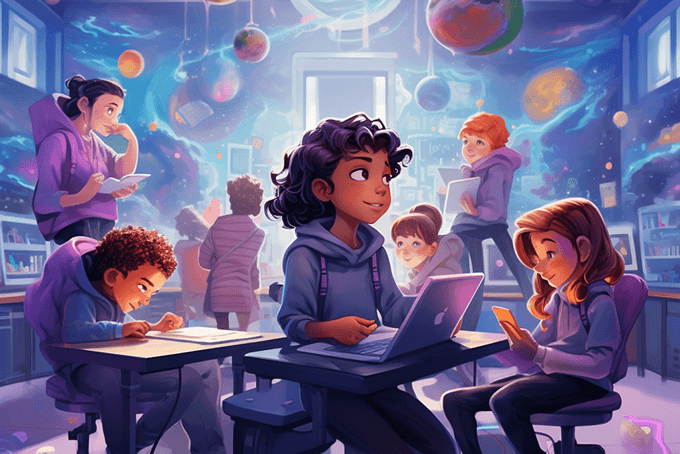Traditional schooling is based on an educational paradigm that has been around since the turn of the century. During the Industrial Revolution, the purpose of education was to prepare people for jobs on assembly lines. And so the organized classroom evolved, where students sat and received their training from a skilled teacher.
Passive Learning
Such traditional education is rooted in the stimulus-response method of behavioral psychology. The leader, or teacher, presents the stimulus–a fact perhaps–and then assesses the students to see if they have learned the appropriate information.
- Teacher presenting stimulus: “Whales have blow holes.”
- Teacher providing guidance: “They get their oxygen through these blow holes.”
- Teacher soliciting response: “Do whales breathe through their nose?”
- If a student replies yes, the teacher presents the stimulus again: “No, they do not. Instead of having noses, they have blow holes to take in oxygen.”
- If a student replies no, the teacher moves on: “Yes that is correct, instead of having a nose, they breathe in through their blow hole. Now let’s explore…”
In this scenario, the student is a passive participant in the process. The information learned is impersonal. Clearly, the teacher is in control of the learning process; his or her interests dictate what and how fast the students learn. The teacher keeps the classroom well organized so it can accommodate large amounts of children, and all the students receive identical training.
Today’s workforce has to meet much different challenges than 100 years ago. Technology has taken over assembly line tasks, and active workers need to adapt, react well to change, and think independently. The Japanese have taught us that our workers need to place a new emphasis on teamwork. In order to meet these new challenges, we need to adopt a new educational paradigm.
Active Learning
The new paradigm for active education puts the learner in control of the learning process. Students can pursue topics that interest them. The process of learning becomes as important as the result. The goal of active learning is to give students the ability to explore whales on their own, not to simply spoonfeed them specific facts about whales.
- Teacher: “Let’s all look at this picture of a whale. Do you see any differences between the whale and the people?”
- Student 1: “The whale has that funny looking hole on the top of its head.”
- Student 2: “The whale has no arms or legs.”
- Student 3: “The whale has a huge mouth.”
- Teacher: “That’s great. Now what I would like each of you to do is explore why those differences exist. We have lots of books on whales, some videotapes, and the phone number for a whale expert at the museum. If you get stuck, I’ll help steer you in the right direction. At the end of the week, you will each present what you learned to your classmates. Feel free to work together.”
The students are now in charge of their learning. They can each explore the topic that most interests them, customizing their educational experience. They can actively pursue information and learn independent thinking skills. The teacher no longer needs to be a subject expert–an impossible task in this age of so much information. Instead, the teacher now oversees the learning process.
Learning Alternatives
There are an infinite number of other ways students can learn about whales. It is the instructor’s responsibility to shape the specific learning environment. Just as an architect creates a living habitat for homeowners, instructional designers create effective learning environments. And just as you would select an architect to design your house, so should you select an instructional designer who matches the type of educational style you prefer.
